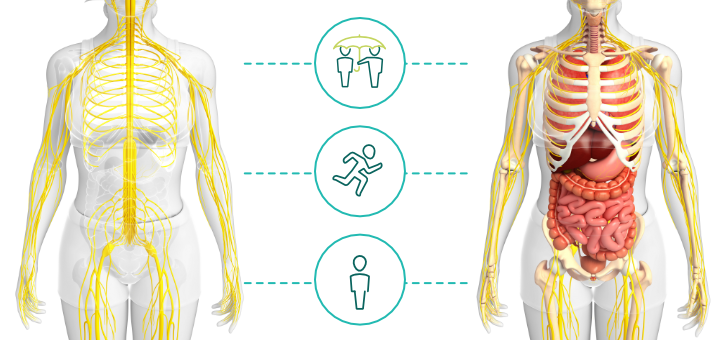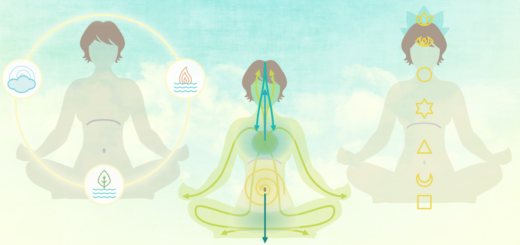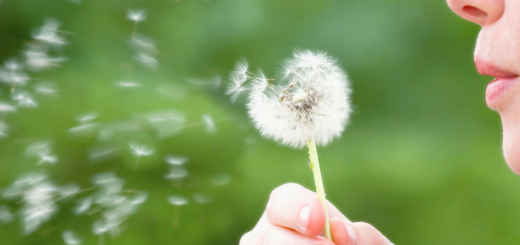Sensation granularity: How your mind interprets your inner state
7When my son was little, he was a very restless baby. He wouldn’t nap for longer than 40 minutes, woke up many times during the night and overall was very sensitive to lights and sounds. If you read baby books or talk to other parents, they will tell you that this is due to lack of schedule or too rigid of a schedule, sleeping alone in the crib or sleeping with parents, scheduled feedings or feedings on-demand, reflux, digestive trouble and so on. The bottom line is that nobody knows for sure and the consensus is that some babies just sleep better than others, and you are lucky if you get one of those.
I have my own theory. I believe that it has a lot to do with how attuned the baby’s brain is to the interoceptive (internal, physiological) sensations that the baby experiences. When the baby is small, the internal sensations are probably more vivid and overwhelming than what the baby can perceive in the outside world, and the brain hasn’t figured out how to explain those yet. I bet this could be rather bothersome. “Your brain must contend with this continuous, ever-changing flow of interoceptive sensations from the predictions that keep you alive. Sometimes you’re aware of them, and other times you’re not, but they are always part of your brain’s model of the world. They are the scientific basis for simple feelings of pleasure, displeasure, arousal, and calmness that you experience every day. For some, the flow is like the trickle of a tranquil brook. For others, it’s like a raging river.”(1)
We do not know why some babies’ brains are more sensitive to those internal sensations than others, but this phenomenon applies to adults, as well. Some adults are highly sensitive to their physiological processes and others are completely oblivious. For some the flow of that interoceptive information is a peaceful brook, for others a raging river.
One term that we can use to describe this range of internal perceptions is “sensation granularity.” Granularity is the ability to distinguish between very similar concepts. When I was about to paint our new house, I made several visits to the paint store and brought back many paint swatches. I was sure that I wanted to paint my walls grey, but I needed to determine just which grey would work best with the floor color, kitchen counters and our overall color scheme. I narrowed it down to five different greys and asked my husband what he thought. His response wasn’t surprising: They all look grey to me.
We learn to differentiate between some things and not others. Eskimos have 50 words for snow because it’s relevant to their life. If you are acutely aware of what’s happening inside of your body at any given moment, you will learn to differentiate between the subtle sensations as well. It applies to emotions, too. Many people lump different emotions together – sad, depressed, moody can be interchangeable to mean “crappy.” Other people see big distinctions between each one of them. Each word describes a certain feeling which is a combination of physical-physiological-mental sensations. The way sad feels to me might be different from the way sad feels to you.
Generally speaking, it is good to have sensation granularity because it helps your brain distinguish between different instances better. For example, when somebody experiences chronic pain, over time the boundaries between actual physical sensations, fears about them and stress associated with them become so blurred that either one can be interpreted as pain by the brain and facilitate a full-blown pain response. But if you are able to distinguish between those, you will be less reactive to each occurrence.
Since the main goal of yoga is to decrease the turbulent activity of the mind, increasing sensation granularity is essential to explaining and regulating our mental-emotional states. That is why we always try to cultivate body – energy – mind awareness in yoga. This is why we take time to assess our inner state at the beginning of the practice, notice how everything we do in yoga affects our interoceptive sensations, and what kind of change we experience at the end.
But yoga takes us one step further. In the course of our yoga practice we train our brains not just to distinguish between different types of sensations, but to observe our inner states without interpreting them. Creating a bit of space between the actual sensation and an interpretation of what it means, helps to prevent the brain from jumping to conclusions too quickly. When you pause to be introspective, you notice your sensations without immediately assigning them meaning, recognizing that there might be multiple options for interpretation. That helps the brain to pick the most useful option for explaining the sensation instead of the most habitual one.
If you have tried this before, you know how hard it is. Our tendency is to immediately interpret the sensation in the same way as the one like it in similar circumstances in the past. This is generally “good enough” for the brain. But if we do that, we continue to reinforce the same patterns of thinking and resulting behavior, often disregarding additional sensory information. Instead of adjusting our perceptions in response to sensory reality, we impose our perceptions on our reality. There is a big gap between what we actually perceive and how we interpret it, but there is a way to bridge that gap. We will talk about it next time.
[jetpack_subscription_form]References
- How Emotions Are Made: The Secret Life of the Brain by Lisa Feldman Barrett





















Such a beautiful articulation of the self-awareness we cultivate through practice. I will be quoting you in class! 🙂
Olga this is so useful. It definitely will help my Y for Pain students
Love it, thank you Olga!
Hari Om Olgaji
In India we believe in rebirth.
We come in to this world with our own ‘karmic baggage’.
This ‘karmic baggage’ is a ‘bundle’ of all our thoughts and emotions accumulated over the previous birth.
‘Restful’ sleep is a function of the nature of our thoughts and emotions.
Similarly ‘Restless’ sleep is also a function of the nature of our thoughts and emotions.
This is a continuous process right from babyhood to adult hood.
Yogicly Yours
Abhinandan
Thank you for your comment. Even with
my steady practice… I wake during the night and each morning with a sad reaction to past trauma/ rejection. Your explanation and the above article are very helpful. I am practicing
Om dum durgayei Nama ha to help also.
Thank you for this article.
Such a wonderful articulation, Olga, of one of the mindfulness elements of yoga. This piece really helped me to clarify why I do, or encourage my students to do in a class, what I do. Sometimes, I like to invite students to simply play with the position of their hands in, say, Vira II. Honestly, however, I am sometimes thinking to myself, “Now, why did I want them to do this?” And your reflection – there it is! As always, thanks for your work and thoughts, Olga! And, I’m with you Alison DeLancey!